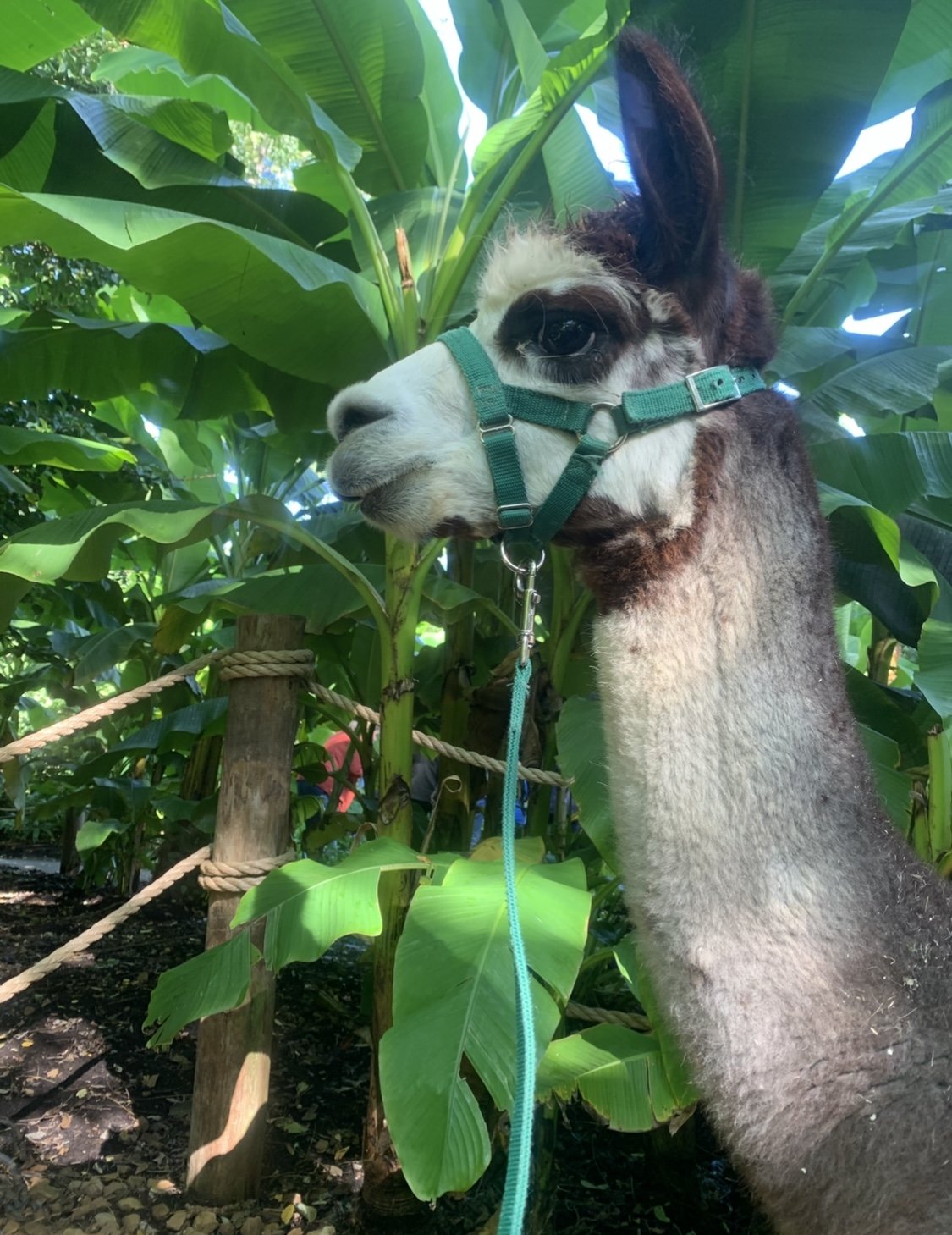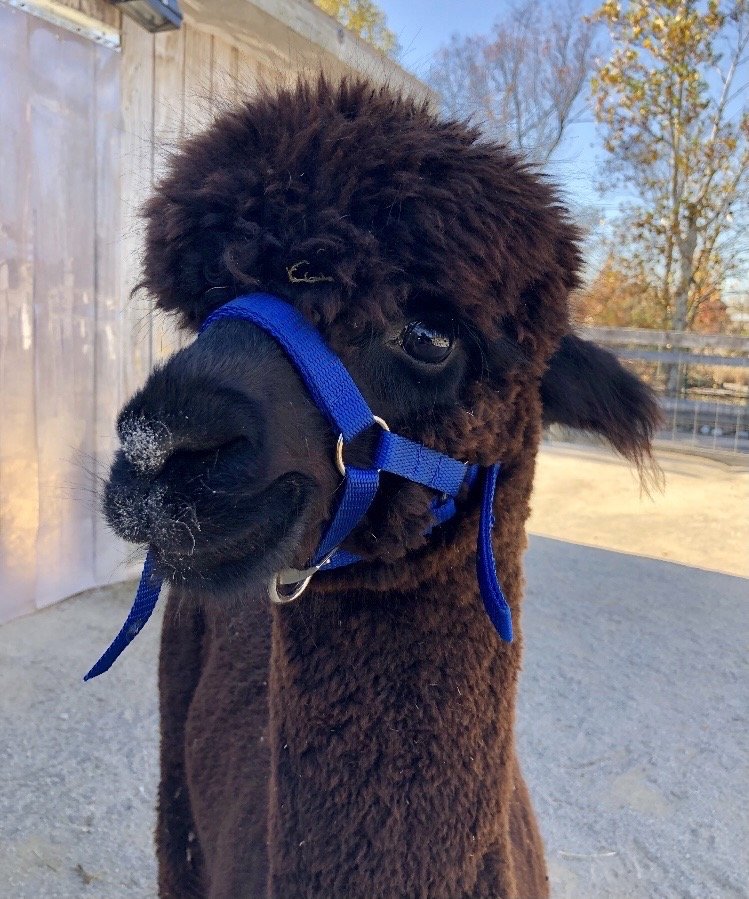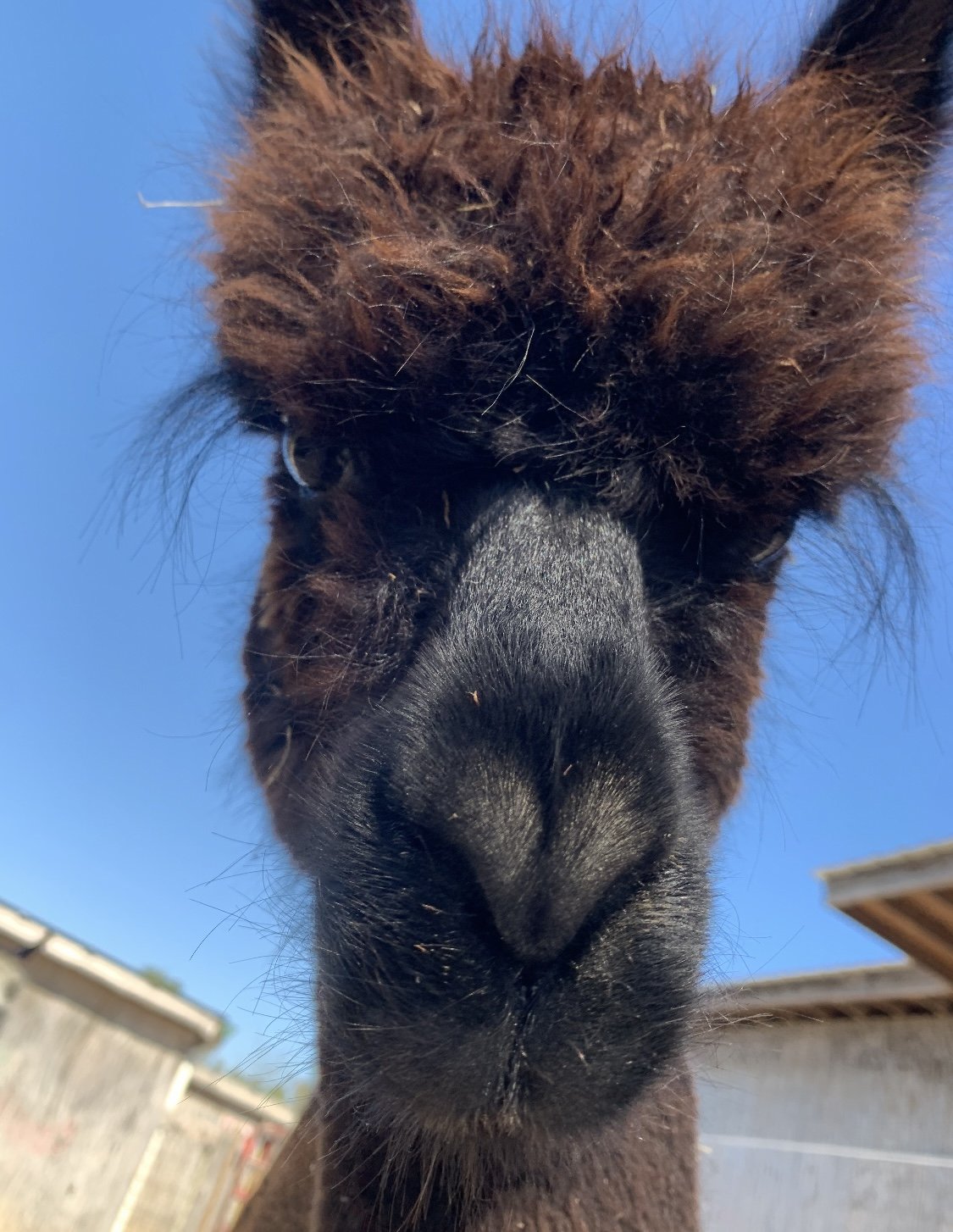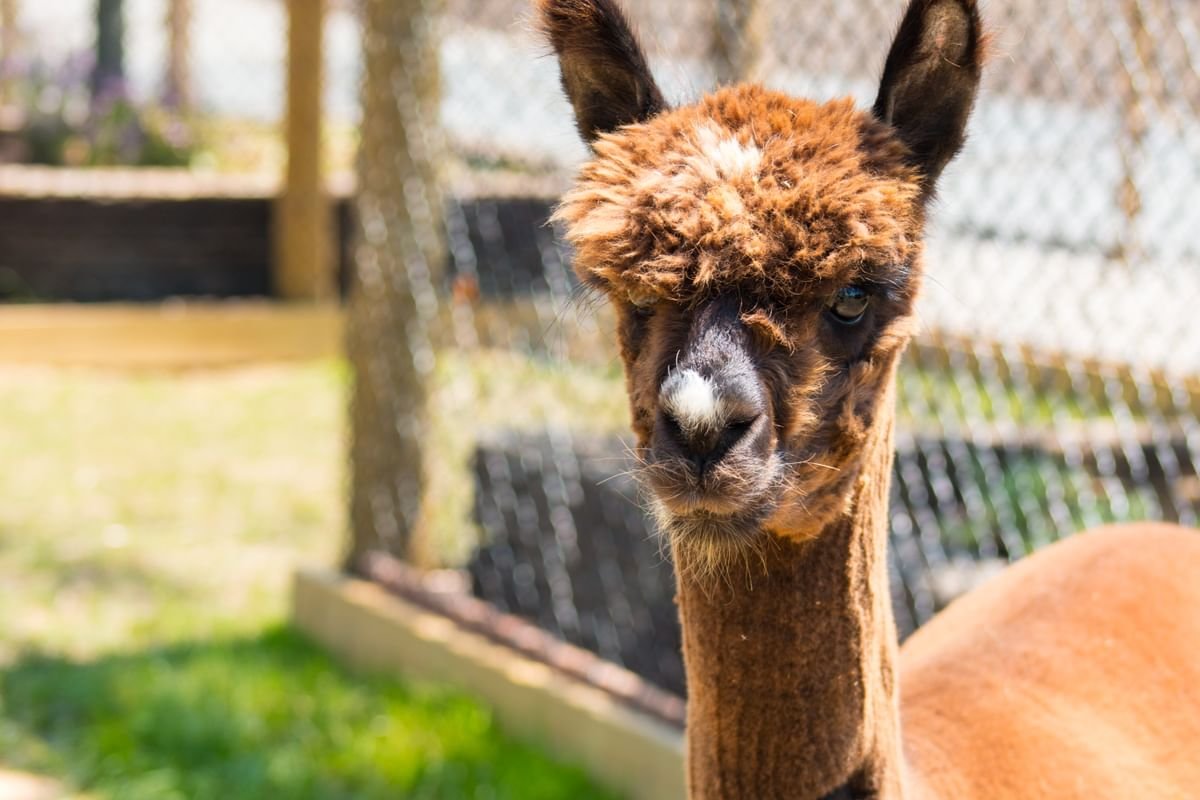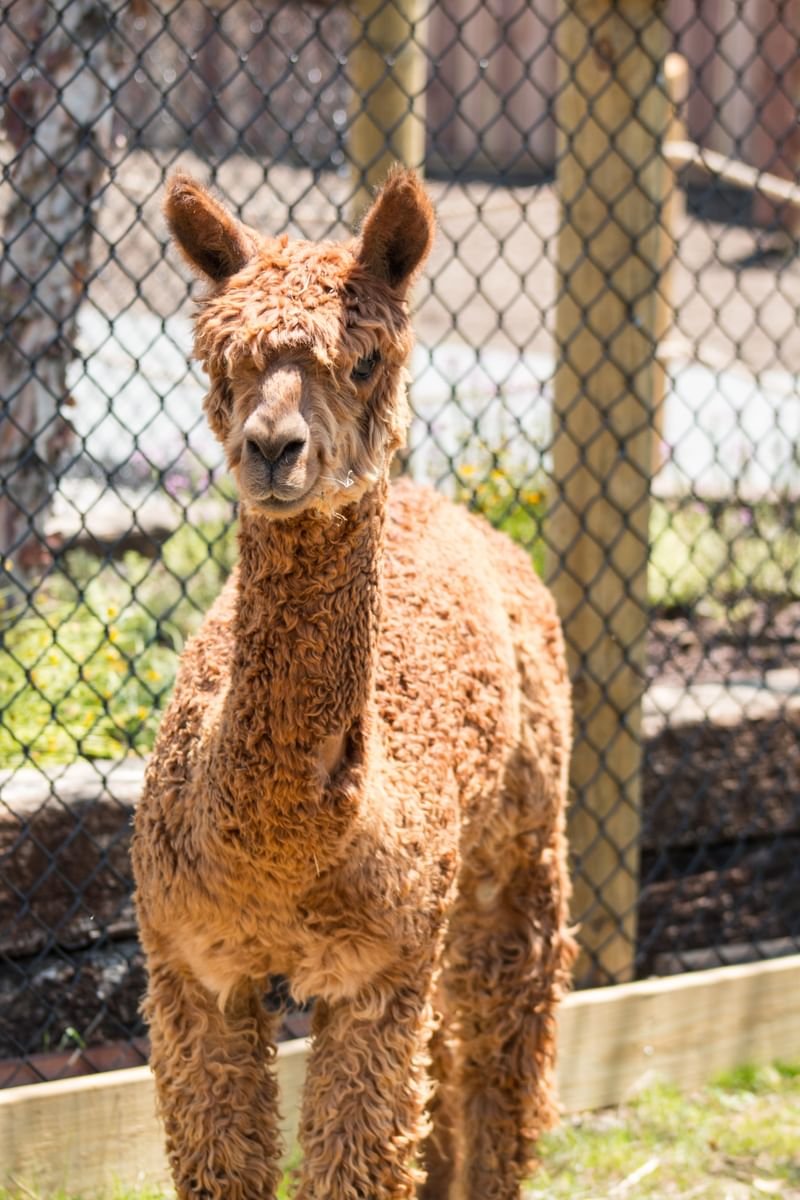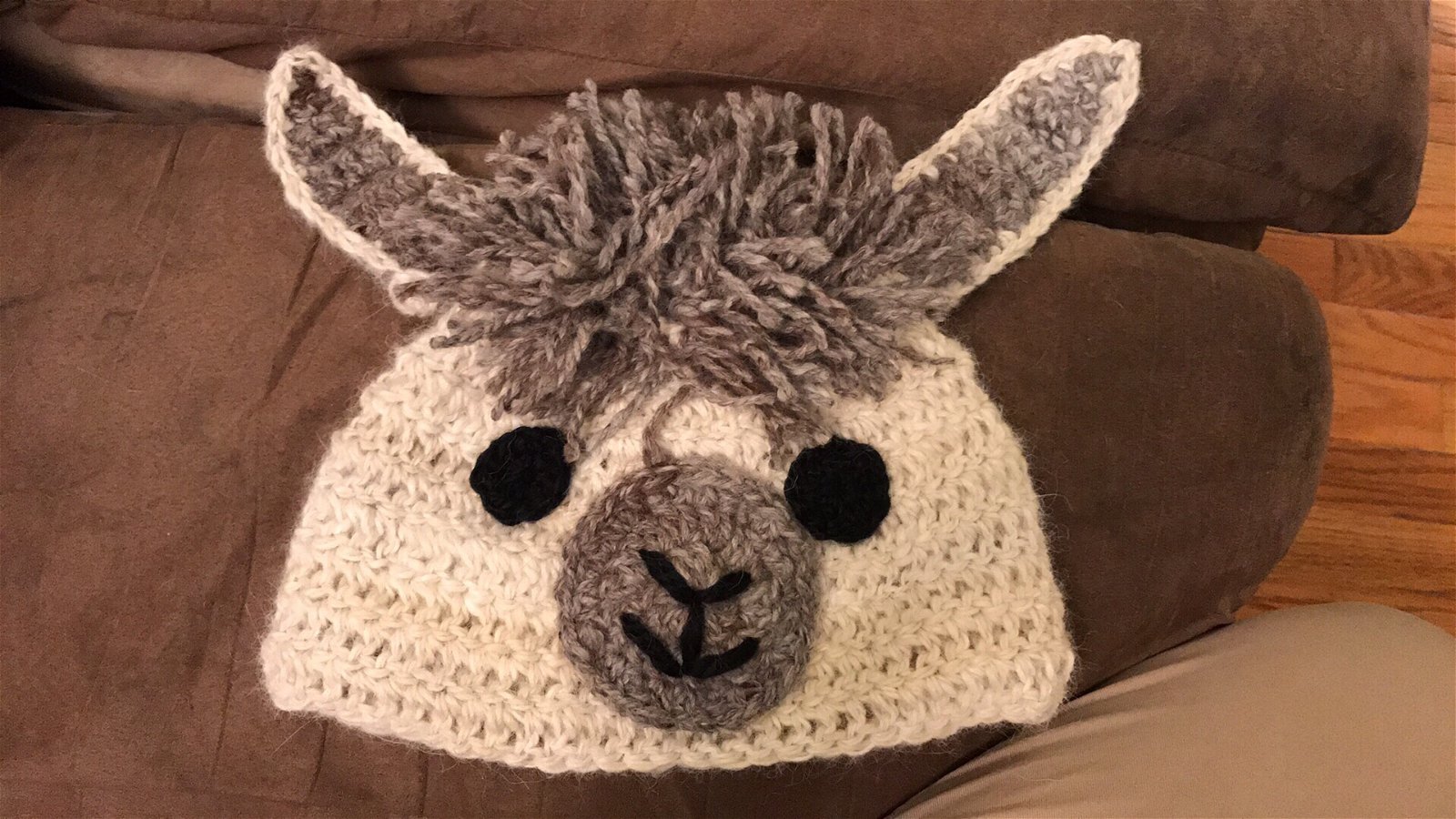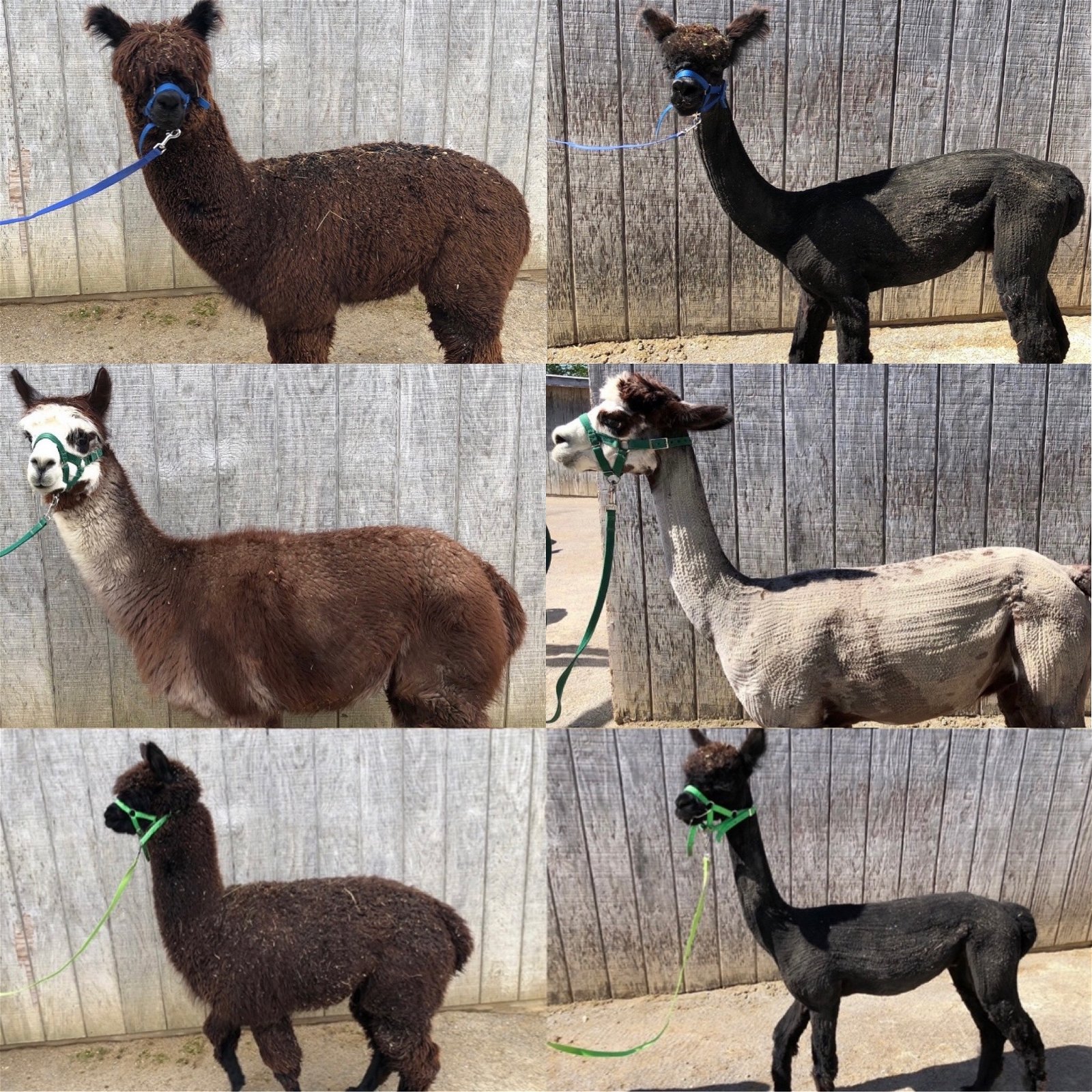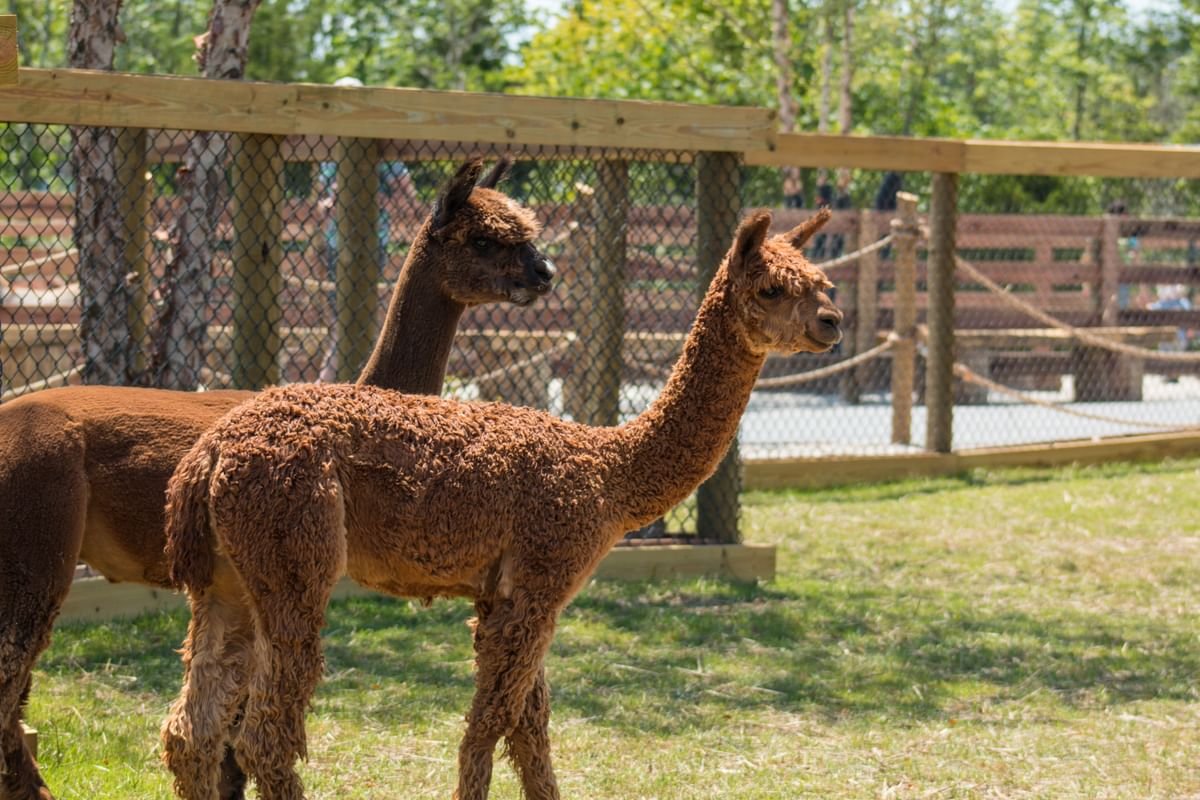Meet Our Alpacas
Al-pac-a your bags and head on over to our zoos to meet some of the world’s fluffiest animals–alpacas! The Eden Zoo at the Creation Museum is home to Alfonso, Bilbo, and Samwise, while the Ararat Ridge Zoo at the Ark Encounter is home to Cain and Abel. Cain and Abel were actually the very first animals to arrive at the zoo back when the Ark Encounter opened in July 2016!
Did you know that alpacas come in 22 basic colors with many more variations and blends? Native to the Andes Mountains of South America, alpacas were domesticated thousands of years ago primarily for their beautiful “hair,” called fiber or fleece. Alpaca fiber is often preferred over sheep wool because it has a much softer texture, does not retain water, and lacks lanolin (the waxy substance in sheep wool). Additionally, alpaca fiber is the second strongest animal fiber in the world–only beaten by the mohair of Angora goats.
Every May, we shear (shave) off the thick layer of fiber our alpacas have grown throughout the year and give it to other staff who weave it into yarn. In fact, one of our zookeepers spun and crocheted Alfonso the alpaca’s fiber into an alpaca hat (see below)! Shearing does not hurt the alpacas–it’s just like getting your hair cut–and we hire professionals who can shave an entire alpaca in just a few minutes. They get extremely fluffy to keep them warm over the winter, so shearing them at the beginning of the summer cools them off in the heat and gives them plenty of time to regrow it before cold weather returns. Zoo staff always have a good laugh after shearing day because we forget how tiny they are under all that floof!
There are two types of alpacas: Huacaya (wah-KY-ah) and Suri (SOO-ree). Huacayas account for 90% of alpacas and have fluffy, curly fleece, whereas Suris have silky, draping fleece that resembles pencil locks. Alfonso, Bilbo, Samwise, and Cain are Huacayas, but Abel is a rare Suri. Alpacas are very social creatures and live in herds. They tend to be gentle, cautious, and observant. Alpacas are also quite vocal and communicate with one another through a series of grunts, hums, and screams. Our nickname for Alfonso is “the velociraptor” because of his shrill screams every time he is mildly inconvenienced. Abel is also quite vocal, making guests wonder where we keep the dinosaurs!
Alpacas are often confused for llamas, but they are much smaller and have shorter faces and ears. However, they belong to the same created kind: the camelid kind. Today, the camelid kind includes seven species: dromedary (one-hump) camels, wild and domestic Bactrian (two-hump) camels, llamas, guanacos (wan-AH-kos, the “wild equivalent” of llamas), alpacas, and vicuñas (vih-COO-nyahs, the “wild equivalent” of alpacas). God tells us in Genesis 1:24-25 that he created all the animals according to their kinds. That means God did not create all seven of those species in the Garden of Eden. Instead, he created the original camelid kind with a lot of genetic potential, and the species we see today are their descendants. These camelids can interbreed to produce hybrids since they are in the same created kind. A cross between an alpaca and a llama is called a huarizo (wah-REE-zo). We had one named Rico for many years at the Creation Museum. However, you will never see an alpaca breed with a cow or a horse to make new animals because they are all in different created kinds.
- © 2024 Answers in Genesis
- Privacy Policy
- Contact
- About

